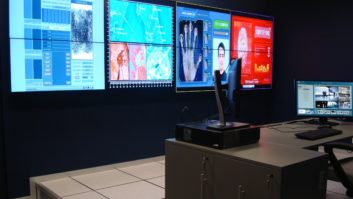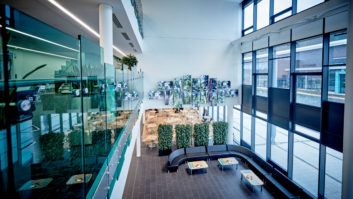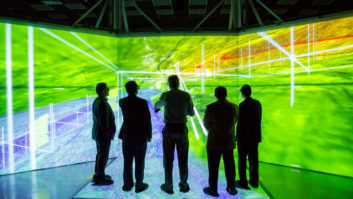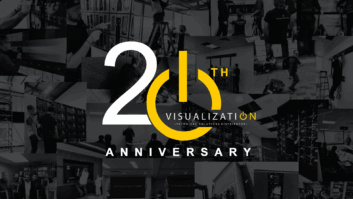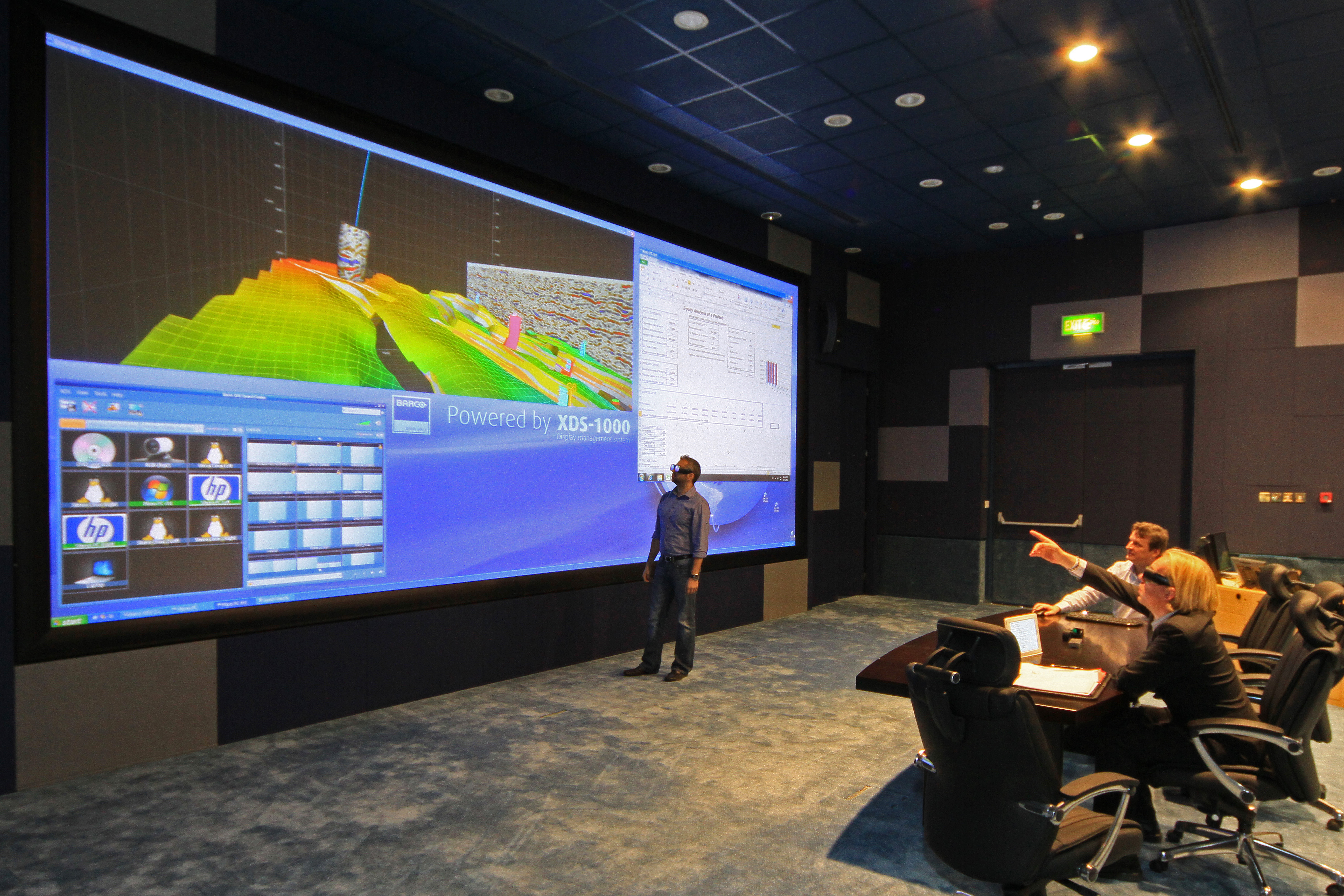
The use of AV technology in the oil and gas industry is expanding as exploration and production projects deploy advanced visualisation and simulation techniques. Steve Montgomery investigates the opportunities for AV system integrators.
The cost of exploratory drilling for oil and gas can be in excess of $1 million per day and it is not uncommon for drilling companies to make several unsuccessful attempts before striking lucrative oil deposits. Once established, a production rig and the refineries, storage and distribution facilities and pipelines associated with it need to be managed, controlled and operated at the highest levels of environmental and personal safety and efficiency. This calls for sophisticated and reliable technology across all aspects of the industry.
With the complexities and costs involved it is unsurprising, that oil and gas companies readily embrace every new technique and technology that will assist in their quest to identify and supply precious commodities; wherever they can be found.
It is now feasible to create central real-time operation centres that can fully manage remote facilities. As Tim Peregrine of Pixel Projects outlines: “Networking and unified communication technologies enable large multinational corporations to remotely manage their facilities and assets around the world from a central point, including offshore production rigs and survey and floating production vessels, by linking together control rooms and geographically dispersed skilled personnel. This has the result of better meeting corporate business needs; facilitating knowledge gathering and evaluation and removing the need to fly specialists and executives around the globe with the consequent loss of time and potential risks involved in reaching remote platforms and inhospitable locations.”
Throughout the exploration and production (E&P) process, large teams of researchers, analysts and managers need to share vast amounts of seismic, visual and production data, and collaborate to ensure that drilling and production processes are undertaken in the most likely areas and that resource extraction is optimised. The whole production lifecycle benefits from enhanced levels of communication between different teams.
Says Peregrine: “The trend is to close the loop between geophysicists, survey teams, drilling platforms and production crews, so that they all feed information back to each other, resulting in better extraction operations and speeding up the evaluation of situations, leading to rapid decision making. For example, as exploratory drilling proceeds, data from the drill bit is passed back to the seismic teams to confirm their expectations and to modify drilling accordingly.
“This requires methods of control and communication that are being made available though global networking capability and the tools that have been developed as a result. As an integration and consultancy company, we work with oil and gas companies and service providers to develop the techniques and methods of enabling this.”
Demand for integration skills is expanding rapidly; and in particular, those for IT and AV due to the ever-increasing demand for collaboration across the organisation. “As analysis and imaging technology becomes more sophisticated and precise, there will be an increasing need for AV technology to keep up with the evolution,” says Mark Wadsworth, international marketing manager for Digital Projection. “This has increased the need for large-screen visual displays with higher resolutions, easier-maintenance systems, wireless and smart displays, and related AV and IT technology. It is a growing market: the introduction of more and newer extraction methods, such as shale extraction, creates more demand for AV products of all types.”
Data analysis applications are essential to the process, with tools such as Schlumberger’s Petrel exploration and production software platform, which, the company says, ‘provides a full spectrum of geophysical workflows to solve most complex structural and stratigraphic challenges’. However it is the need for large teams to collaborate on a worldwide basis rather than the software cost (in excess of $90,000 per seat) that has driven Tullow Oil to install high-resolution videowalls and inter-office communication systems to support the visualisation models.
“With teams of geologists, geophysicists, asset managers and drill-head managers spread onshore and offshore through the world, needing to share results and ideas, Tullow Oil identified a need for local high-resolution visualisation environments and unified collaboration systems,” explains Kelvin Gregory, business development manager for AV and IT integration specialist Ccomm. “We worked closely with geophysical users, senior managers and analysts to develop and implement a full turnkey service with large screen, high-resolution videowalls, and communications and IT support services across a number of interpretation rooms, auditoriums, 2D and 3D visualisation rooms. The integrated environment allows the company to distribute visual data from its E&P software and collaborate in real time across the globe for accelerated decision making. The system is used throughout the workflow; it can even display live images from the drill bit itself as drilling proceeds.”
The requirement for large AV systems extends far beyond research and production environments. Visualisation, 3D projection and, more recently, gamification are used in constructing refineries and processing plants as well as training staff.
www.ccomm.co.uk
www.digitalprojection.com
www.pixelprojects.co.uk
